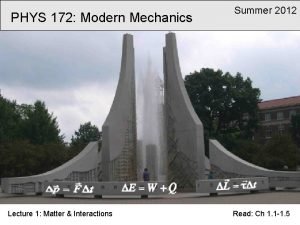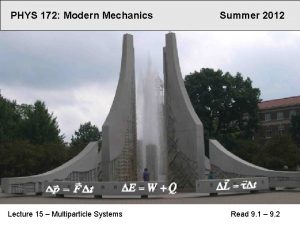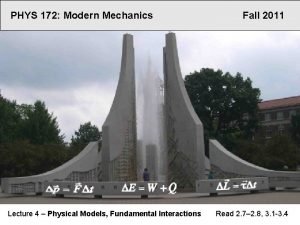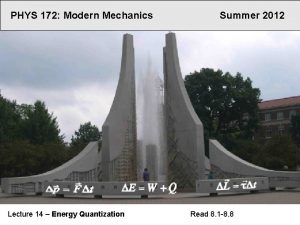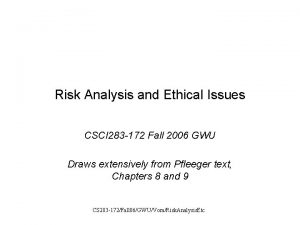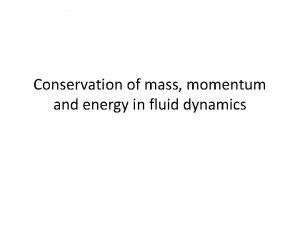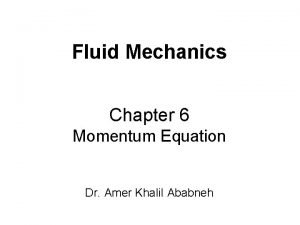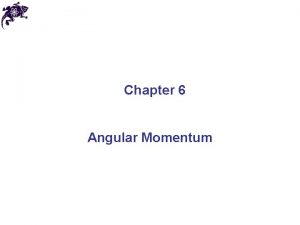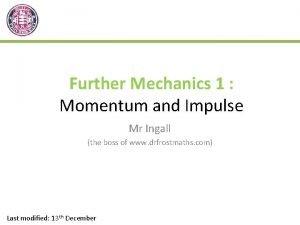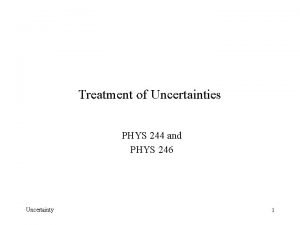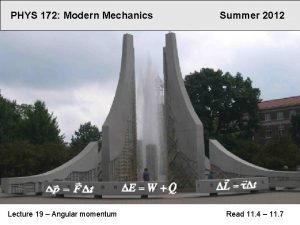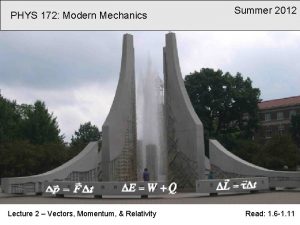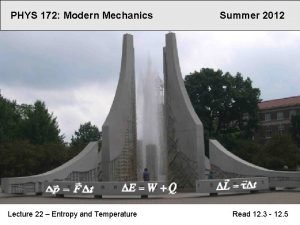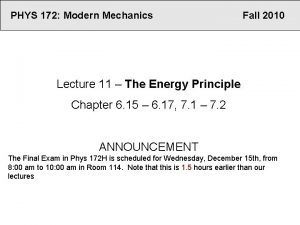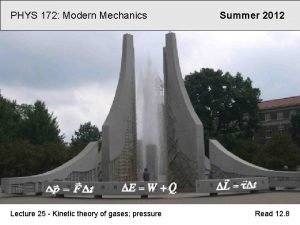PHYS 172 Modern Mechanics Lecture 3 The Momentum













- Slides: 13

PHYS 172: Modern Mechanics Lecture 3 - The Momentum Principle Summer 2011 Read 2. 1 -2. 3

The Momentum Principle An object moves in a straight line and at constant speed except to the extent that it interacts with other objects The Momentum Principle Change of momentum is equal to the net force acting on an object times the duration of the interaction • Assume that F does not change during t What is “force” F? measure of interaction. (Newton)

The principle of superposition Net force The Superposition Principle: The net force on an object is the vector sum of all the individual forces exerted on it by all other objects Each individual interaction is unaffected by the presence of other interacting objects Definition of net force: Misconception: need constant force to maintain motion Ignored friction!

Measuring force The Momentum Principle 1. Use the momentum principle 2. Use other knowledge: (Hooke’s spring force law) L 0 L Robert Hooke 1635 -1702 k. S – spring stiffness (spring constant) units: N/m Direction of force: toward equilibrium

Impulse The Momentum Principle Definition of impulse Note: small t Fnet ~ const Momentum principle: The change of the momentum of an object is equal to the net impulse applied to it

Predictions using the Momentum Principle The Momentum Principle Update form of the momentum principle Short enough, F~const For components:

Example k. S=500 N m. ion rict no f Force: provided by a spring stretched by L=4 cm interaction duration: 1 s ? Find momentum pf if pi=<0, 0, 0> kg. m/s 1. Force: force must not change during t 2. Momentum: N. s = kg. m/s 2. s = kg. m/s

System and surroundings system System: an object for which we calculate some property (force, momentum, etc) a system can consist of several objects Surroundings: objects which interact with system (earth, man, air…) Only external forces matter ! Internal forces cancel

Applying the Momentum Principle to a system: predicting motion 1. Choose system and surroundings 2. Make a list of objects in surroundings that exert significant forces on system 3. Apply the Momentum Principle 4. Apply the position update formula if needed 5. Check for reasonableness (units, etc. )

Example: a hockey puck A hockey puck with a mass of 0. 16 kg is initially at rest. A player hits it applying force during t = 4 ms. Where would the puck be 2 seconds after it loses contact with hockey stick? Solution: 1. Choose a system and surroundings: 2. Make a list of objects in surroundings that exert significant forces on system 3. Apply the Momentum Principle Hockey stick Earth Ice (floor) (normal force, ~friction)

Example: a hockey puck A hockey puck with a mass of 0. 16 kg is initially at rest. A player hits it applying force during t = 4 ms. Where would the puck be 2 seconds after it loses contact with hockey stick? Solution: y 3. Momentum x 4. The position update formula * Choose coordinate system origin: initial position of puck

Shoot the monkey lecture demo Clicker question #5: The hunter aims right at the monkey and shoots. As the bullet leaves the rifle the monkey sees the flash it releases the branch and drops down in free fall Will the bullet: A) Hit the monkey B) Undershoot the monkey C) Overshoot the monkey (ignore air resistance) Note: the trajectory is a parabola (if air friction is ignored)

Ball and a cart lecture demo Clicker question #4: A cart moves at constant velocity on horizontal surface and shoots a cannon ball straight up. When the cannon ball drops down, it will land A) Back into the cannon B) Behind the cannon C) In front of the cannon
